Trekking | northern Shan State

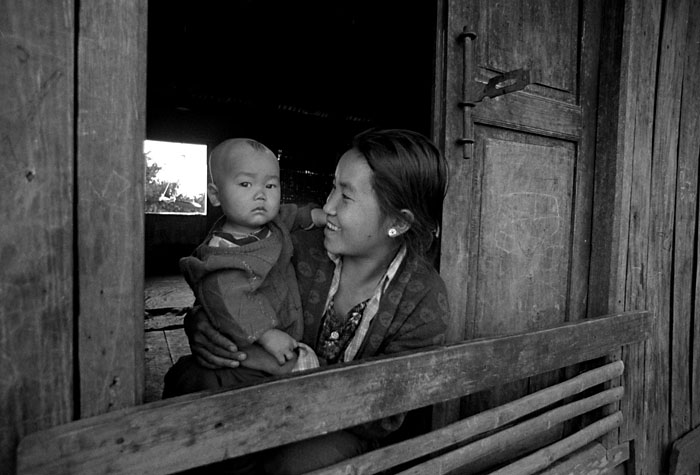
Olympus OM-2N | Kodak Plus-X
Saying goodbye to the hospitable village that had taken us in for the night.


Olympus OM-2N | Kodak Plus-X
Saying goodbye to the hospitable village that had taken us in for the night.

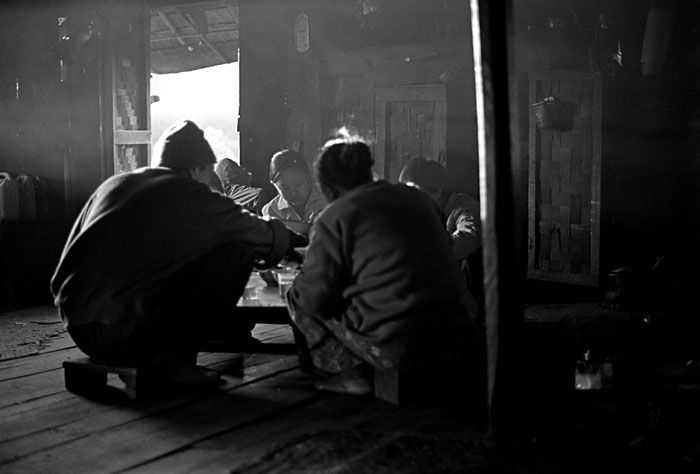
Olympus OM-2N | Kodak Plus-X
The family crowded around one table for breakfast while allowing us to use their spare. They'd cooked dinner for us, but Naing Naing prepared our breakfast separately with groceries he'd brought—toast and mashed avocado with sugar (not sure why sugar rather than salt). The 4" stools the family members use allow them to relax a bit while retaining the usual squatting position.

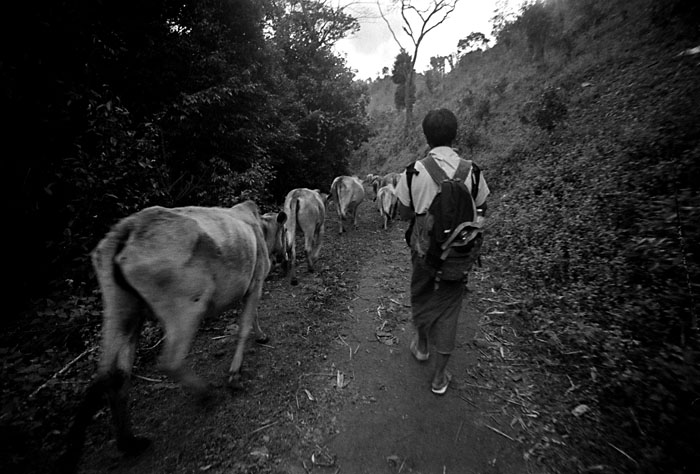
Olympus OM-2N | Kodak Plus-X
Near the end of the steep trail to Naung Pat—the village where we would spend the night—we were accompanied by a herd of cows.

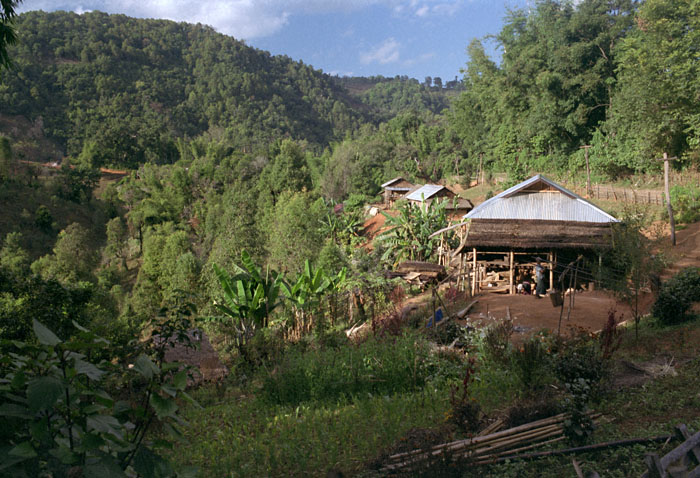
Olympus OM-2N | Fuji Reala

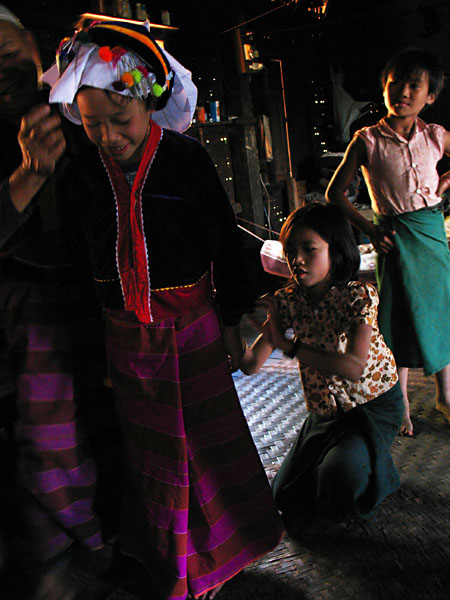
Canon A630
The Palaung costume was once daily wear—even the fitted metal bands around the waist were worn to bed. Modern women eschew the costume outside of special occasions. The transition between women who wear Palaung dress every day and women who no longer do starts around women under 50 years old. These women's children definitely do not wear Palaung dress, while some of the middle-aged women—"middle age" in Burma being around 38—might still wear the traditional striped longyi, if not the full outfit.
We stopped by a home in Qsaw for lunch—amazingly, without warning of any kind we were warmly welcomed (although for this first meal, Naing Naing had brought the actual ingredients with him). After Lii tried on the traditional costume, one of the young girls of the household showed us hers.

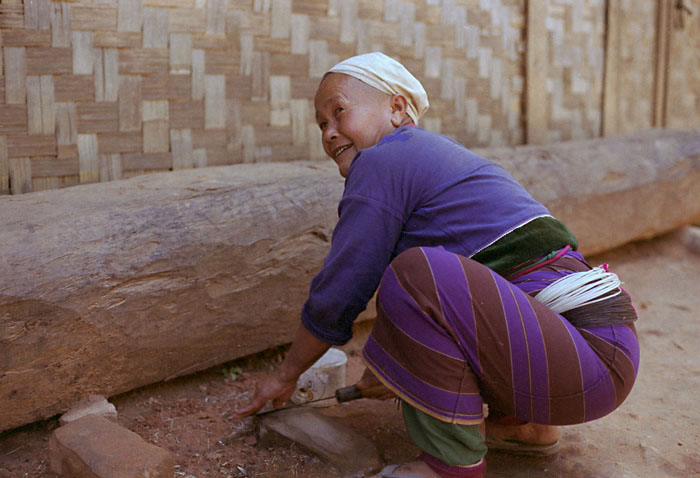
Olympus OM-2N | Fuji Reala
The Palaung costume was once daily wear—even the fitted metal bands around the waist were worn to bed. Modern women eschew the costume outside of special occasions. The transition between women who wear Palaung dress every day and women who no longer do starts around women under 50 years old. These women's children definitely do not wear Palaung dress, while some of the middle-aged women—"middle age" in Burma being around 38—might still wear the traditional striped longyi, if not the full outfit.
The designs are different colors for different tribes of Palaung. This dark purple longyi is the one I bought for myself in Kyaukme, but some of the other women in Qsaw wore a bright fuschia longyi that we saw frequently. Women in a village could come from various parts of the Palaung world due to marriage.

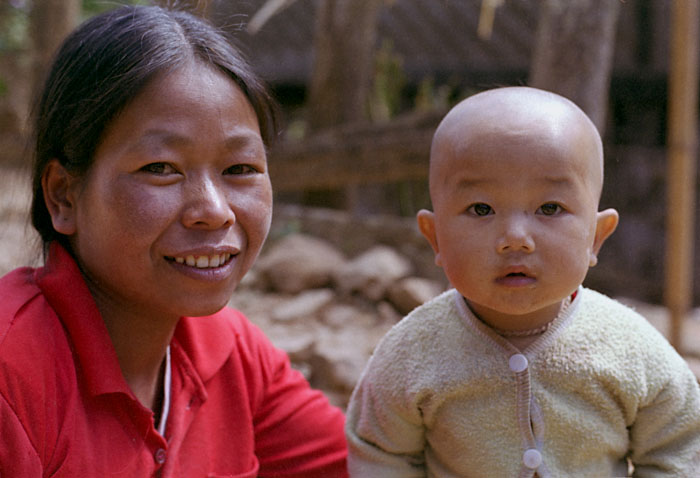
Olympus OM-2N | Fuji Reala
We met friendly people everywhere while trekking. Our guide Naing Naing, as a Palaung man from Namshan, spoke Shan and Palaung fluently and was warmly welcomed at every village.

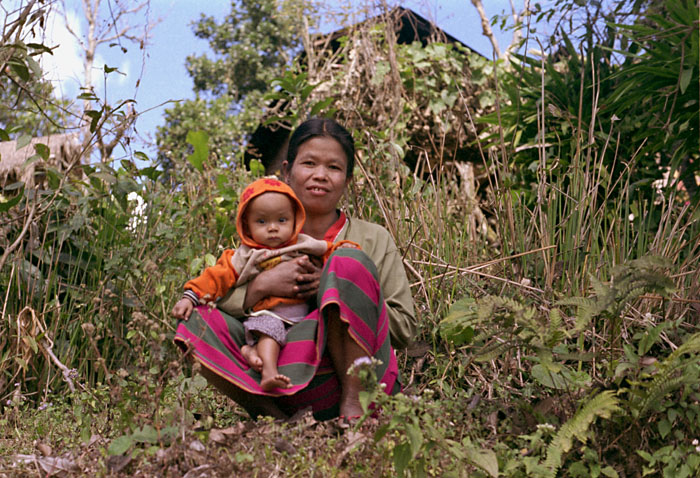
Olympus OM-2N | Fuji Reala
We met friendly people everywhere while trekking. Our guide Naing Naing, as a Palaung man from Namshan, spoke Shan and Palaung fluently and was warmly welcomed at every village.

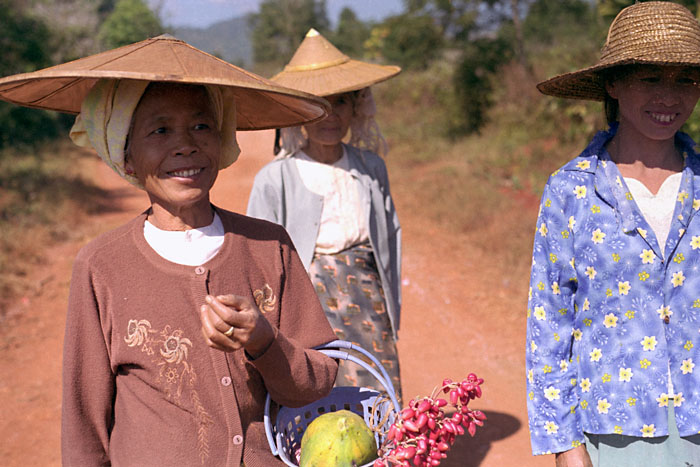
Olympus OM-2N | Fuji Reala
We met friendly people everywhere while trekking. Our guide Naing Naing, as a Palaung man from Namshan, spoke Shan and Palaung fluently and was warmly welcomed at every village.

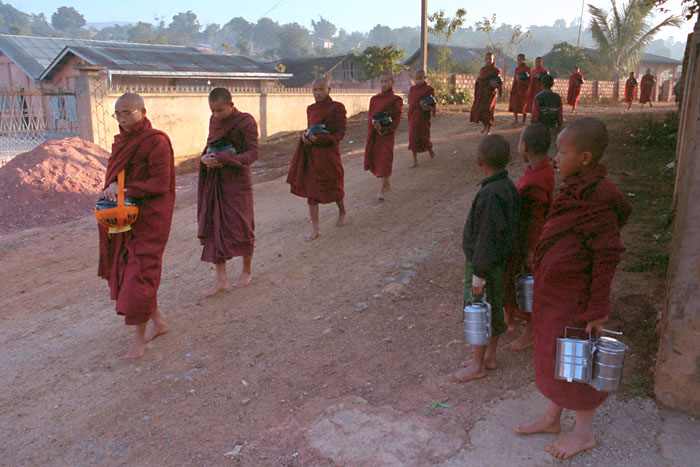
Olympus OM-2N | Kodak Portra 400NC
The little monk probably had enough food for now, which is why he'd been hanging out in front of Naing Naing's house rather than continuing down the road with the others. After cheerfully posing for a photo, he turned and joined the line as the other monks returned.